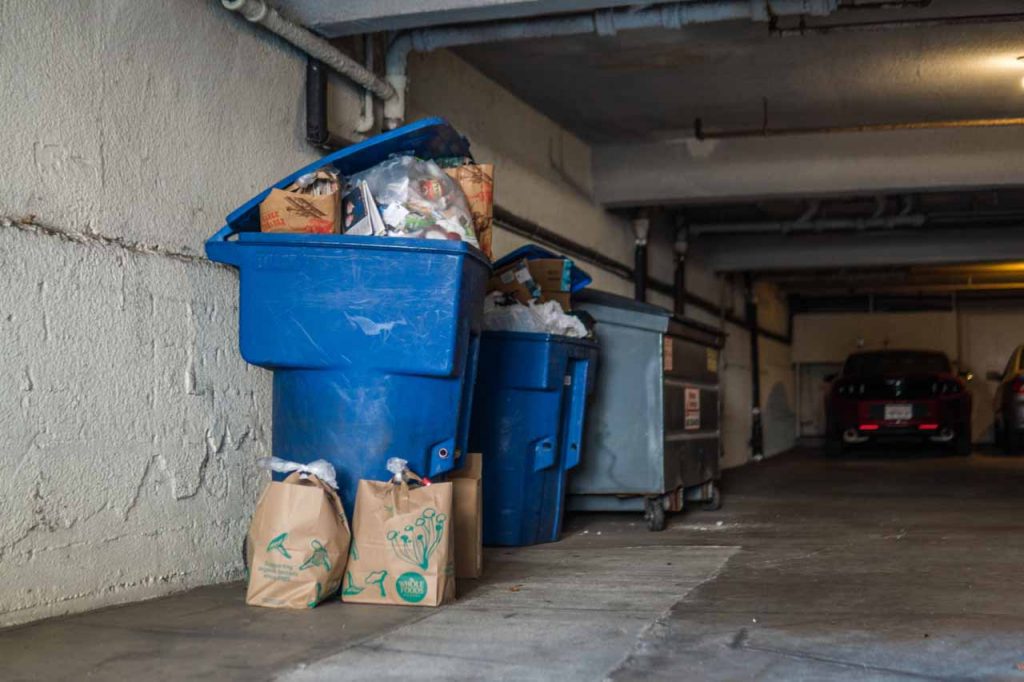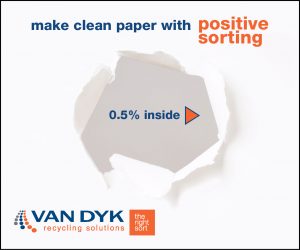
California cities of 50,000 residents or more are seeing inbound contamination rates between 8% and 46%, with an average of 20%. | Oksana Shturo/Shutterstock
According to a study from The Recycling Partnership, large and mid-sized cities in California see an average contamination rate of around 20%, a finding that underscores the complications of aligning enthusiastic residents with local-program realities.
The Recycling Partnership, an organization that is backed by corporate stakeholders and is geared toward improving municipal recycling in the U.S., undertook research in 2019 to better understand material quality in communities of 50,000 people or more in California, Oregon and Washington.
The organization compiled available program data; surveyed local officials, haulers, processors and residents; and conducted interviews and focus groups. The findings, released May 4, deliver some notable numbers.
The research found that 89% of residents in larger West Coast municipalities find it easy to participate in materials diversion and that, by and large, residents “want to recycle, recycle everything they can, and recycle the correct way.” However, that dedication to diversion is not always translating to quality loads heading to the materials recovery facility (MRF).
According to the report, California cities of 50,000 residents or more are seeing inbound contamination rates between 8% and 46%, with an average of 20%. In Oregon and Washington, cities reported contamination rates averaging 11%.
While those data points come from reporting and calculation mechanisms in place in different communities, which The Recycling Partnership notes are often lacking in consistency, the report does provide details on one particularly rigorous material audit in the Portland, Ore. region.
Field sampling of the curbside, single-stream recycling system in and around Portland determined the area had a 22% contamination rate.
That study, which also assessed recyclable material that ended up in the trash stream, showed the average household generated 594 pounds of recyclable material per year. Of that weight, 418 pounds per household went into curbside recycling, 132 pounds went into garbage and 44 pounds were collected through the state container deposit program.
The Recycling Partnership recommended more communities make efforts to dig deeper into their waste numbers.
“Cities and counties that can isolate curbside tonnage from other recycling streams and track contamination over time can see trends in their program’s efficiency,” the organization states in the contamination report. “This data can then be used to focus their education and outreach efforts, allowing the local program to make the education effort actionable and make the most out of the available resources.”
In terms of specific contaminants that are causing problems, one material type identified by the research will be of little surprise to industry veterans. City officials and MRF operators in all three states noted plastic bags are particularly problematic.
In West Coast resident surveys conducted by The Recycling Partnership, 25% to 50% of respondents said they put plastic bags in their curbside carts, with Oregon respondents on the low end of that spectrum and California residents on the high end.
“Based on surveys focused in Southern California, we found that the majority of residents think plastic bags are accepted in their curbside recycling program, regardless of whether plastic bags are actually accepted by their program,” the report states.
The report also provides insight on some of the details of curbside collection service on the West Coast.
In California, there are 175 cities with 50,000 residents or more. Of those, 158 communities offer single-stream collection, 10 offer mixed-waste collection and seven have dual-stream programs.
In Oregon and Washington, 35 cities were big enough to qualify for the study. Among those programs, 19 have traditional single-stream collection, 14 use single-stream collection with glass collected in a separate container and two programs are dual-stream initiatives.
More stories about contamination
- Community Spotlight: Atlanta’s recycling still improving
- Effective resident education requires careful messaging
- Tech to spot hidden batteries draws $6.4M investment



